The Koreshan Unity
The Origins of the Koreshan Unity
- Millennial Fervor and Utopian Communalism
- Out of the Burned-Over District
- Teed’s Illumination
- Koresh
- Inside the Hollow Earth
- The New Jerusalem
Millennial Fervor and Utopian Communalism
Koreshanity was born in the wake of two related movements: the millennial fervor that swept early- to mid-19th century central and western New York State; and the utopian communalism that began attracting increasing numbers of adherents during the same period and into the later 19th century.
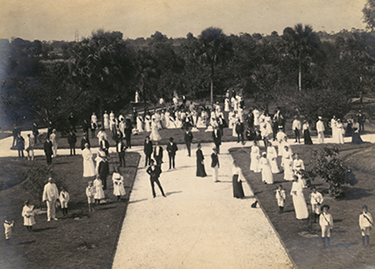
Millenialism often refers to the Christian belief that Jesus Christ will return to reign on earth for 1,000 years, but it can also refer more broadly to any religious movement expounding a belief that an age of peace and prosperity is imminent. Millenialism tends to take hold in times of social, economic and political change or upheaval. In the 19th century climate of rapid urbanization, industrialization, population growth and immigration, it was not surprising that some people gathered into one of the growing number of utopian communities established either to help usher in a millennial epoch or simply to escape from the surrounding chaos into a seemingly ideal society. It is not purely coincidental that Edward Bellamy’s widely popular utopian fantasy Looking Backward was published in 1887, exactly when the fledgling Koreshan Unity was beginning to flourish.
Out of the Burned-Over District
The Koreshan Unity’s charismatic founder, Dr. Cyrus Teed, was born in 1839 in rural Delaware County, New York. As a child, Teed moved with his family to New Hartford, just outside Utica, where they settled next door to his grandfather, a Baptist clergyman. Here Teed grew up, planted firmly in the center of what became known as New York’s Burned-Over District due to the zealous fire-and-brimstone evangelism of the period, a climate that strongly influenced the development of Teed’s own religious beliefs and style of evangelism.
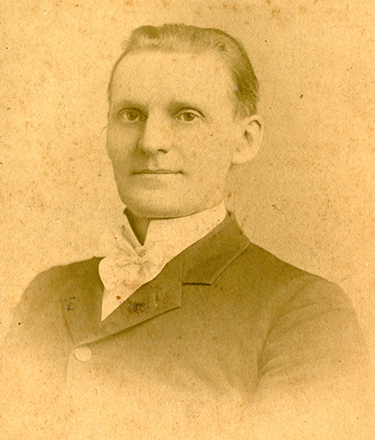
Teed married Fidelia M. Rowe in 1859, and their son Douglas Arthur Teed was born on February 21, 1860. As an adult, Douglas Arthur Teed was a respected artist, and some of his works later graced the walls of the Koreshan Unity’s Art Hall. From the time he was nine years old, however, Douglas had little contact with his father, who left his family to pursue his religious and scientific interests.
Teed moved his family to New York City later in 1860 and enlisted in the Union Army in 1862. He served for 15 months in Company F, 127th New York Infantry, and was discharged "for disability" in October 1863. In 1867, Teed attended the Eclectic Medical College of the City of New York. He graduated in February 1868 and joined his uncle’s medical practice back in Utica, then established his own practice in 1869. In keeping with the principles of eclectic medicine, Teed avoided the use of strong drugs and purgatives such as mercury-based remedies in favor of botanical remedies, a practice later reflected in the Koreshans’ deep interest in horticulture.
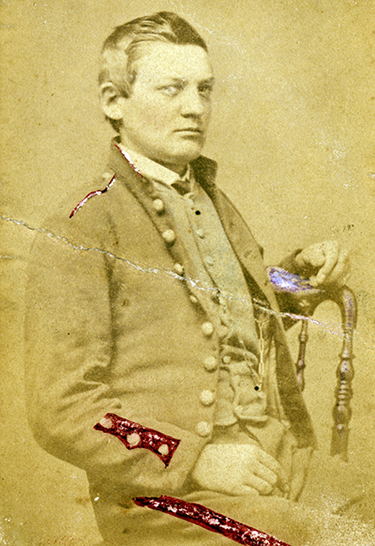
Teed’s Illumination
Teed’s interests went beyond medicine to encompass alchemy, physics, and metaphysics, and he conducted experiments in these areas in his medical office laboratory. It was here in this laboratory in 1869 that Teed conceived what would become known as Koreshanity after experiencing a late-night religious vision. During what he called his “illumination,” he saw a beautiful woman who revealed to him a series of universal truths which formed the fundamental principles of Koreshan belief. We can never be certain whether Teed’s experience followed being knocked unconscious by an electrical shock, as some say, or a period of intense meditation, as others say.
Following his illumination, Teed began writing and speaking about his beliefs, a move not calculated to assist his medical practice, and he was forced to relocate several times in attempts to keep his practice afloat.
He joined a Shaker community in 1878, then in 1880 founded a communal settlement in Moravia, New York. The community failed, and Teed moved his medical practice to Syracuse, then to New York City, where another attempted communal settlement also failed.
Koresh
Teed’s persuasive oratory finally enabled him to assemble a firm core of followers in Chicago in the late 1880s, incorporating his organization there as the College of Life in 1886. He established a printing house and began publishing The Guiding Star that December, then The Flaming Sword beginning in November 1889. These publications began a long legacy of Koreshan publishing aimed at the public as well as their own members, intended to explain and promote their beliefs, relate and preserve their story, and discuss political, social, scientific, and religious ideas and issues.
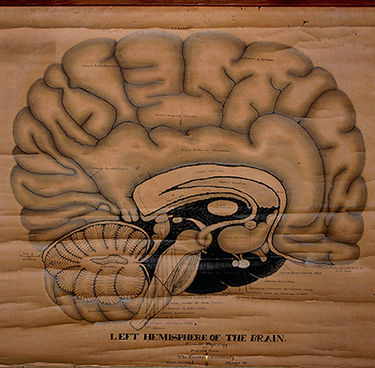
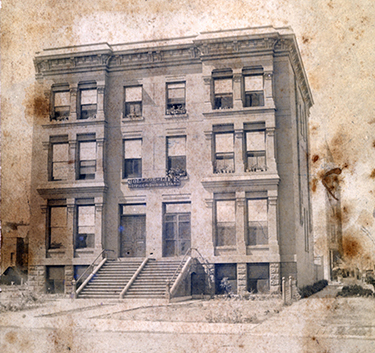
Believing himself to be a messiah or savior who would lead his people in establishing a New Jerusalem, in 1891 Cyrus Teed assumed the name Koresh, the transliteration of the Hebrew word for Cyrus, כורש. He took on the name after Cyrus the Great, King of Persia, whom the Bible refers to as “shepherd” for ending the Babylonian exile of the Jews and leading them back to Jerusalem.
Inside the Hollow Earth
Among Teed’s most interesting beliefs was cellular cosmogony, or the hollow earth. In The Cellular Cosmogony (first published in 1898), Teed explained that the earth was not a convex sphere but instead a hollow, concave cell containing the entire universe with the sun at its center. The earth was motionless while the heavens rotated within the concave sphere. Life existed on the inside surface of the cell, and people were held on that inner surface by centrifugal force. Teed dismissed gravity, heliocentrism, and other scientific theories as “gigantic fallacy and farce” and the convex appearance of the earth’s surface as an “optical illusion.”
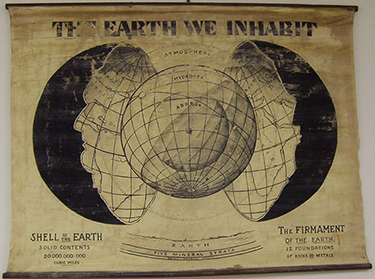
In truth, according to Teed, “The earth is a concave sphere, the ratio of curvation being eight inches to the mile, thus giving a diameter of eight thousand, and a corresponding circumference of about twenty-five thousand miles. This fact is physically and mechanically demonstrated by placing a perpendicular post at any point on the surface of the earth, (though it were better to place it by the side of a surface of water,) and extending a straight line at right angles from this perpendicular. The line thus extended will strike the surface at any distance proportionate to the height of the vertical post.”
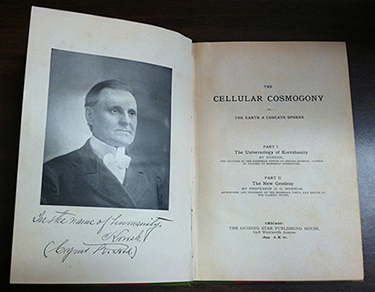

The Koreshans had in fact conducted this very experiment in 1897 to demonstrate the truth of their beliefs. The Koreshan Unity Geodetic Survey staff devised an apparatus they called a rectilineator and conducted tests on the Gulf Coast at Naples, the results of which Teed published in The Cellular Cosmogony as proof that the earth was indeed concave.
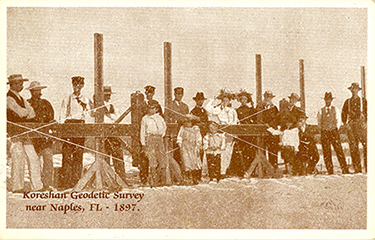
Inside the hollow earth, the sun and stars formed a “stellar nucleus” in the center of the atmosphere above the earth’s concave surface. Instead of the earth rotating on an axis and revolving around the sun, it was the heavens that moved, their movement generated by the “electro-magnetic substance created at and radiating from the stellar nucleus.” The heavens were, as Teed described them, “a great electro-magnetic battery.”
The New Jerusalem
In Chicago, as in his previous locations, Teed’s beliefs did not endear him or his followers to the press or most of the public, and he again began looking for a friendlier location.

Teed found his New Jerusalem in a sparsely populated plot of land south of Fort Myers, Florida, and in 1894 he began moving his followers to Estero, Florida. Here the Koreshan Unity established a growing, thriving, self-sustaining community that literally changed the landscape of Southwest Florida as well as its history.
As the Koreshan community grew and flourished in the early 1900s, tensions arose between the Unity and politicians and citizens of nearby Fort Myers, leading to a brawl on October 13, 1906, in which Teed was hit in the head and face several times. His health declined quickly following the fight, and he died on December 22, 1908.

Reincarnation was one of the truths revealed during Teed’s illumination nearly 40 years earlier, and he and his followers expected that his death (and theirs) would be followed by physical resurrection and immortality. The expectant Koreshans placed the deceased Teed in a bath tub and awaited his resurrection until, a week later, the Lee County health officer finally ordered the dismayed followers to bury the body.

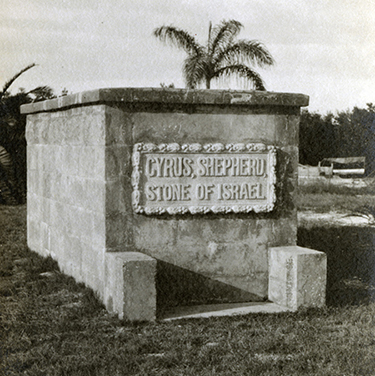
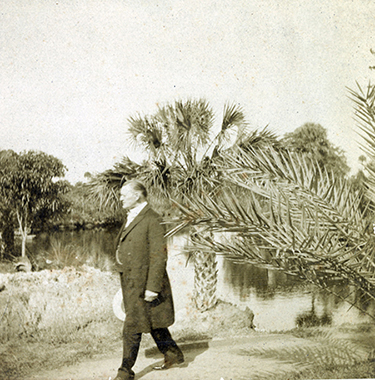

 Listen: The Bluegrass & Old-Time Program
Listen: The Bluegrass & Old-Time Program